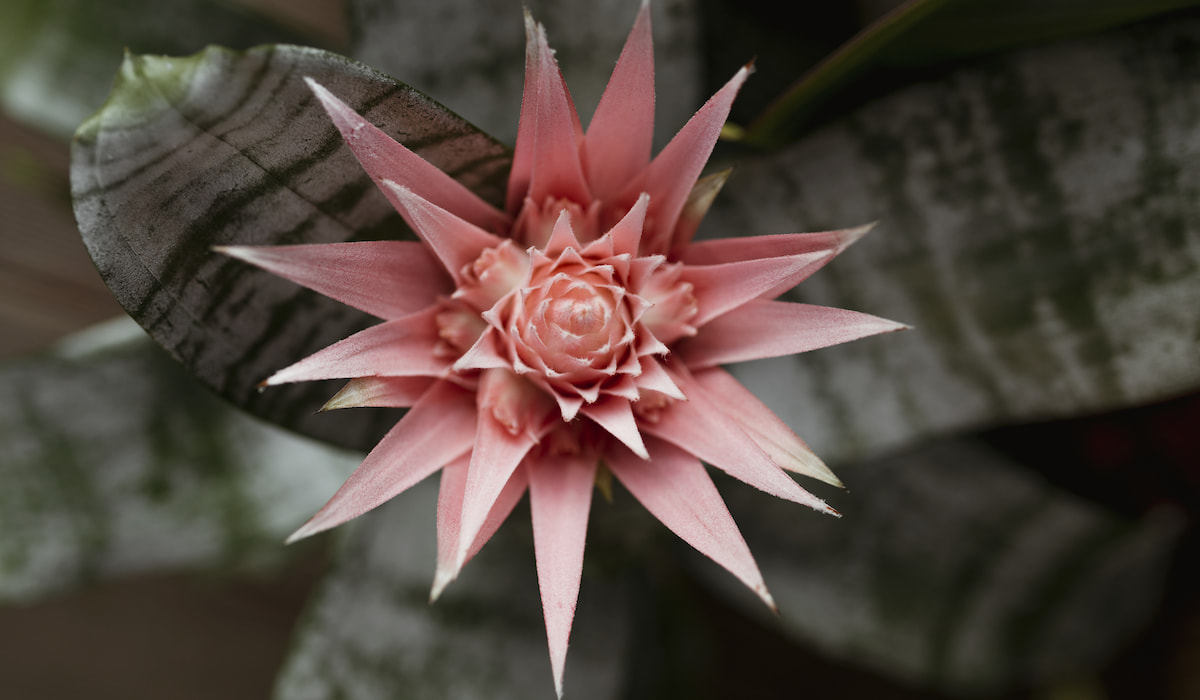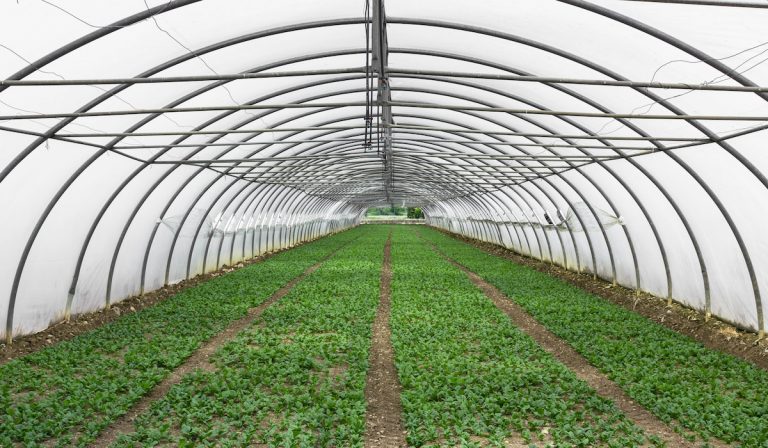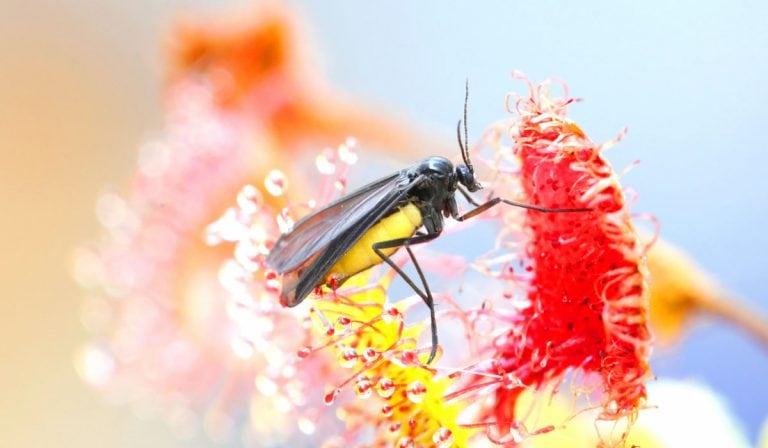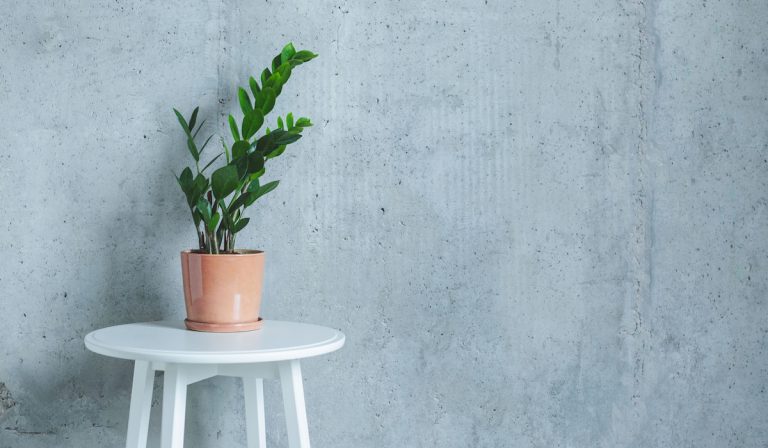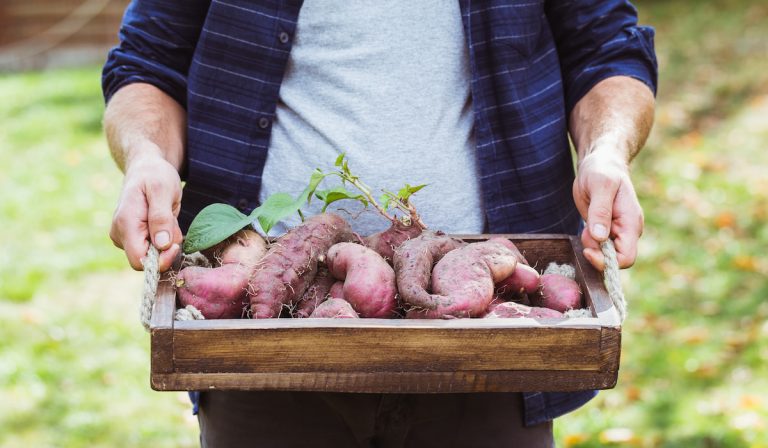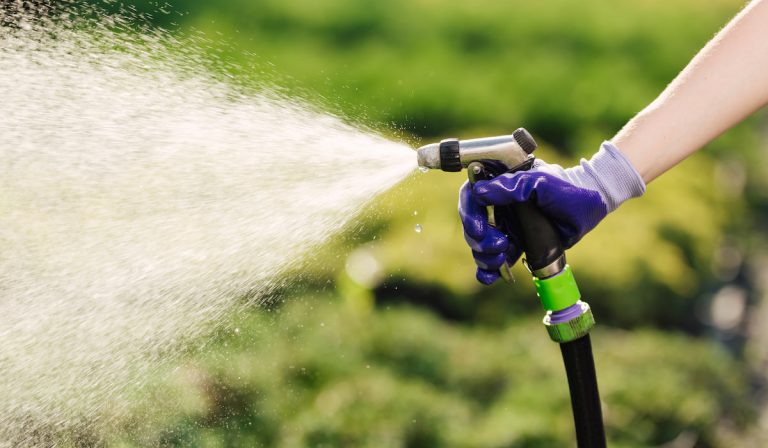11 Breathtaking Bromeliad Color Variations
One feature common to the members of the bromeliad family is colorful leaves and flowers. While the family is a diverse one, the attractive colors of the member plants are the spectacle.
The bromeliad family is quite large, with its most popular members being Spanish moss and pineapple.
Bromeliads are easy to grow, and they thrive both in greenhouses and indoors. Those kept as houseplants, on average, grow within the height range of 1 inch to 3 feet.
Besides being colorful, bromeliads have very fascinating foliage. Their leaves can either be wiry and fine or leathery and broad. There are many features to admire in this family of plants.
Away from that, our emphasis in this article will be on the allure of bromeliads. We provide information on some breathtaking bromeliad color variations and the plant with those colors.
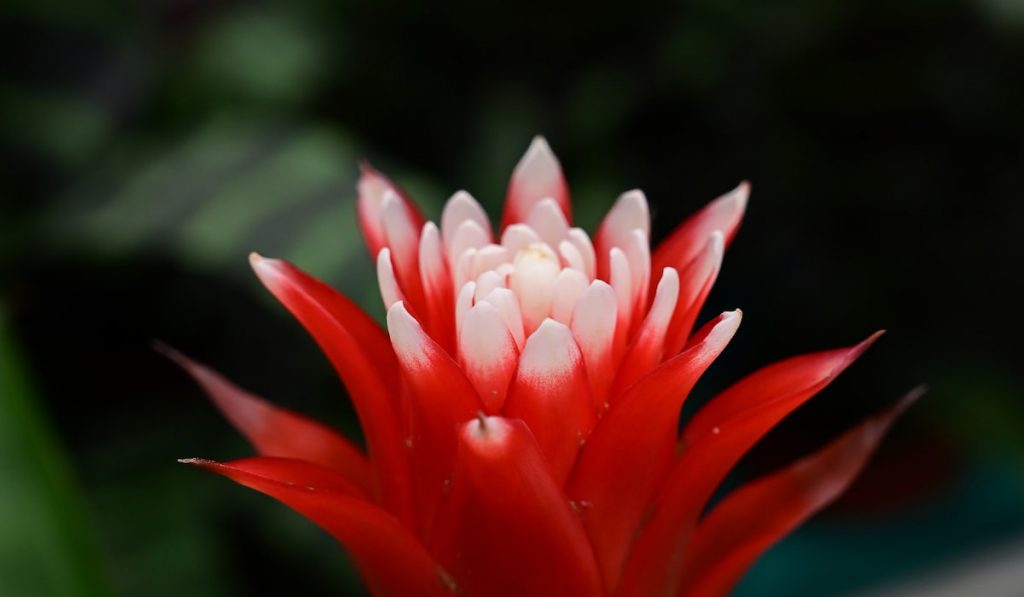
Table of Contents
1. Hechtia – Red or Pink Leaves and Pink Flowers
Hechtia bromeliads are native to Mexico, home to almost 50 species. They are found growing on rocky slopes alongside succulents and cacti. Hechtia are quite hardy, and they can even become dormant to survive droughts.
Hechtia are known to grow long leaves with sharp, spiny edges arranged in rosettes. Their leaves are tinged with gold, purple, red, pink, and bronze. Hechtias produce flowers on erect stalks, which can be pink, yellow, or white. Like other bromeliads, these flowers only bloom once throughout their lifespan.
Hechtia should be planted in gritty potting soil with a temperature of around 60-80°F. It can survive temperatures as low as 20°F and as high as 100°F.
In the right climates, Hechtia can be used for outdoor landscaping. They thrive in areas with full sun to partial shade.
Hechtia is found in USDA growing zones 9-11.
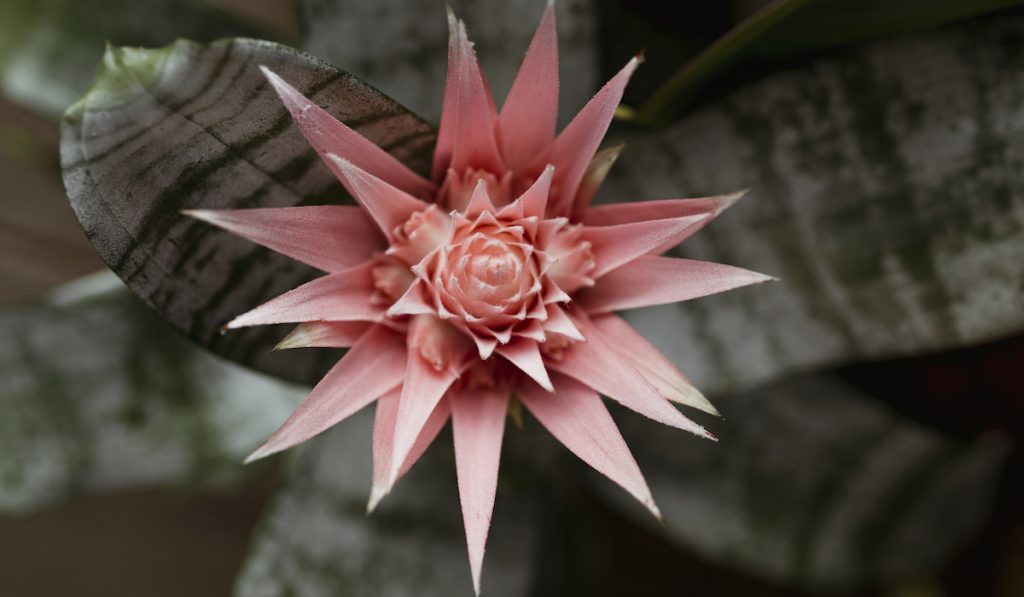
2. Aechmea, or Urn Plants – Green Leaves and Pink Flowers
Urn plants are reliable, easy bloomers. They are native to subtropical South America, North America, and Central America. Urn plants come in various forms, textures, and colors. Plus, their flowers come in various colors including, pink, red and purple.
Their spiny-edged leaves are usually speckled, with a band of silver scales or solid green. The height of these plants varies among the species.
The various species under the Aechmea genus are some of the most long-lasting and resilient bromeliads. This probably is one of the reasons why they are the most common indoor variety.
Urn Plants have bracts and striking flowers that last up to six months before fading completely. They thrive in areas with bright, indirect sunlight exposure and partial shade when planted outdoors. They are found in USDA growing zones 10-11.
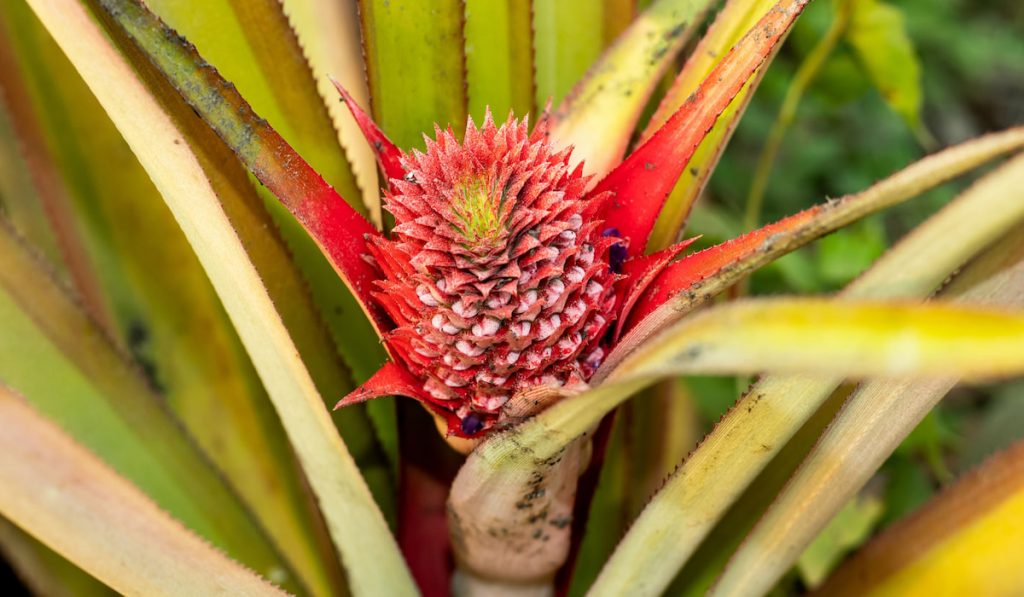
3. Ananas or Pineapple – Green and White Striped Foliage
Ananas bromeliads are mostly regarded as ornamental plants. They have a dense pattern of spiny pink leaves that can grow around 3-5 feet long.
Within the space of three months, the flowers produce a small, brown, pine-cone-shaped, pineapple fruit. Unlike the commercially cultivated pineapples, this fruit is markedly more bitter.
For Ananas to flourish, they require regular feeding, rich soil, plenty of moisture, and strong light.

4. Cryptanthus or Earth Stars – Pink or White Flowers
Cryptanthus, also referred to as Earth Stars, has an unusual growth pattern, with its pointed leaves arranged in a tight, low rosette.
This bromeliad is native to South America and Central America. The Cryptanthus genus is made up of mostly terrestrial bromeliads that are grown as potted plants.
Cryptanthus grow so close to the ground and look similar to brightly colored starfish. It is usually used as a houseplant, and it grows as tall as 4-10 inches.
The banded, solid, or striped leaves of Cryptanthus may be brown, bronze, green, pink, silver, or white. The flowers are not prominent.
With a reputation for being difficult, Earth Stars bloom all year round when satisfied with their environment. thrive in areas with partial shade or filtered sunlight. They are found in USDA growing zones 10-11.
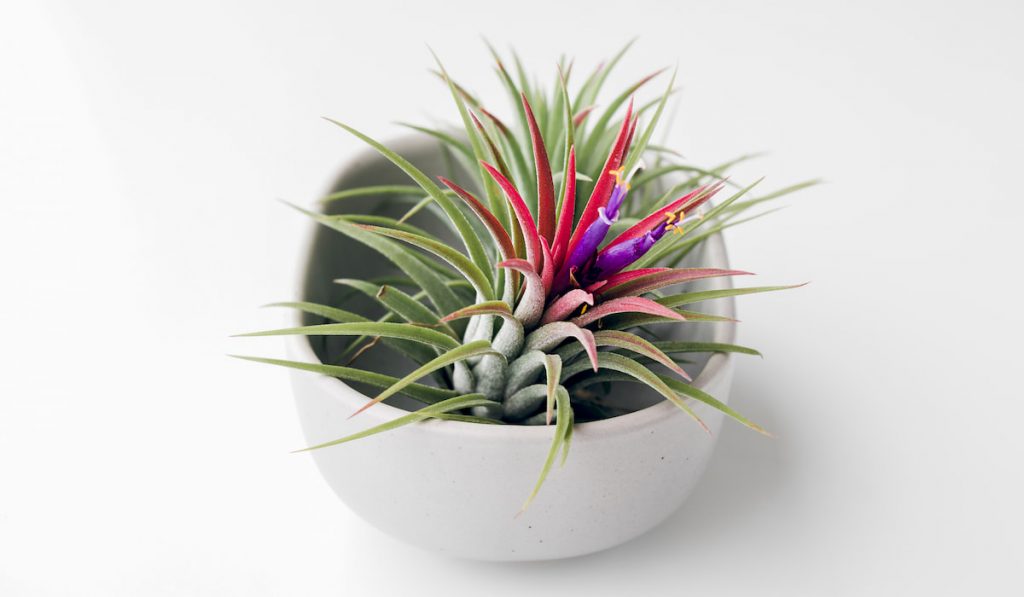
5. Tillandsia or Air Plants – Purple, Red, and Blue Flowers
Tillandsia, also referred to as air plants, is one of the larger groups in the bromeliad family with over 500 species. It is native to southern South America and the Southern United States.
Tillandsias are wiry, twisted plants with silver-grey scales covering their leaves. Their height varies among species.
Tillandsia flower stalks are bright pink with purple, white, orange, red, and blue flowers. Upon flowering, the leaves of Tillandsia flush red.
Tillandsia is easy to care for. You can mount tillandsias with silver-grey leaves on rocks or driftwood in bright and filtered sunlight.
If your Tillandsias have soft green leaves, place them in containers with less light and keep them moist regularly.
Frequent misting should provide sufficient moisture for your Tillandsia. For optimal growth, air plants should be in an environment with humidity between 50 and 70%.
The tiny scales covering the plant help it absorb all its nutrients and moisture. The scales play a vital role in the plant’s survival. So, do not handle the plants too often to prevent the scales from rubbing off.
Tillandsia is grown as a houseplant and is found in USDA growing zone 11.
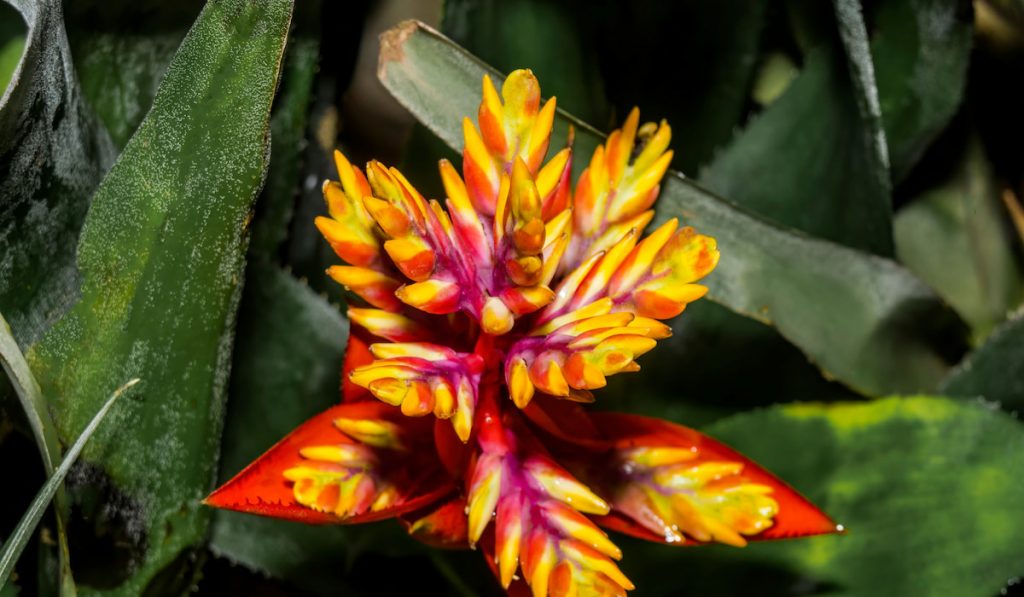
6. Vrieseas – Light Green to Purplish-Red Foliage
Vrieseas are native to south and Central America. They go by several other names including, painted feather bromeliad, zebra bromeliad, or flaming sword bromeliad.
Many people who keep Vriseas do so because of their attractive foliage. Others are attracted to their brightly colored flower spikes. Both flowering and foliage Vrieseas are available, but the flowering variety is the more common one.
Vriesea has flat, colorful bracts with tiny and almost insignificant blossoms. Their foliage is often variegated and feathery. Going by their size, Vrieseas make good desktop plants.
Vriesea bromeliads are found in USDA growing zones 10-11.
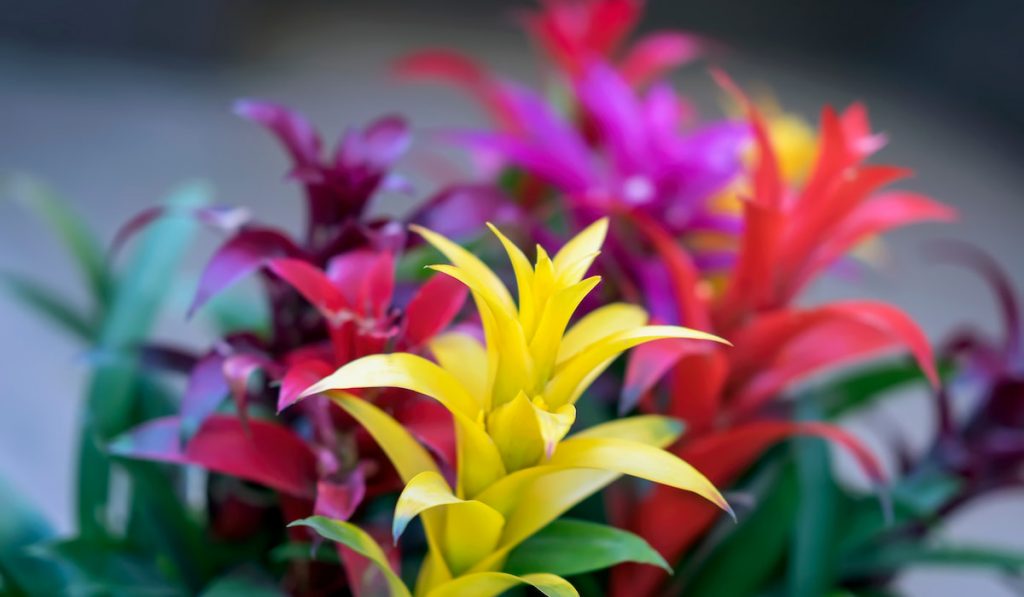
7. Guzmania – White, Red, Purple, Yellow, and Orange Flowers
Guzmania is well known for its mesmerizing blooms, exotic personality, and elegant colors.
Guzmania are native to south and Central America. Their leaves are available in an array of colors including, red, yellow, orange, white, and purple.
Guzmania flowers are beautiful, exquisite, and have a long lifespan. They can be kept as house plants like other bromeliads. When used as tabletop plants, they can offer several weeks of color.
The height of a Guzmania varies by species, with most growing up to 24 inches. Guzmania are suited for USDA growing zones 10-11.
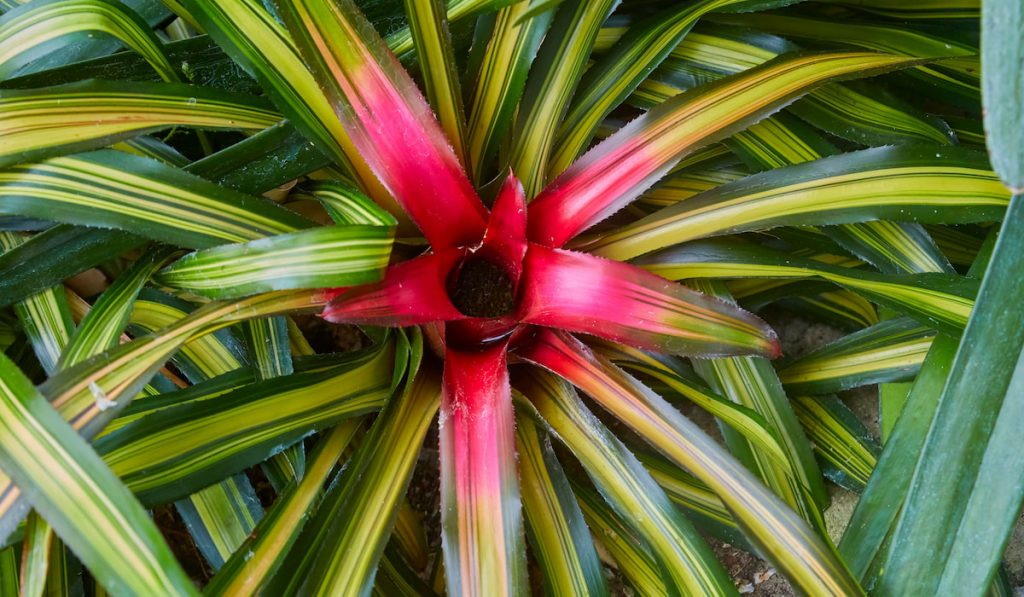
8. Neoregelia – White, Red, or Green Leaves
Neoregelia is native to Central America, South America, and subtropical North America. It is available in various colors, sizes, leaf textures, and blooms.
Neoregelias are medium-sized plants with some growing under 1 foot tall. Their flowers have white or blue petals and a compound head placed in the middle of a rosette. The leaves are also available in various sizes and colors, and they retain their bright colors all year round.
Neoregelia is cold-hardy and able to survive cold temperatures of up to 40°F. Species like the N. carolina are often variegated with narrow leaves. When in bloom, the said species produces small flowers where the center of the cup becomes red.
Neoregelia is found in USDA growing zone 9-10.

9. Billbergia – Blue, Purple, and Red Flowers
Billbergia is native to Brazil, Mexico, and Central America. It produces short-lived flowers with beautiful red, purple, yellow, white, green, and blue colors. When Billbergia blooms its flowers start opening from the top down, taking 7-8 days to complete blooming.
The growth pattern of Billbergia varies among species. Some have pointed leaves ordered in a rosette pattern, while others have cascading and grassy leaves. Billbergias thrive in areas with indirect sunlight exposure but do not usually do well when planted indoors.
Billbergia is found in USDA growing zones 10-11.
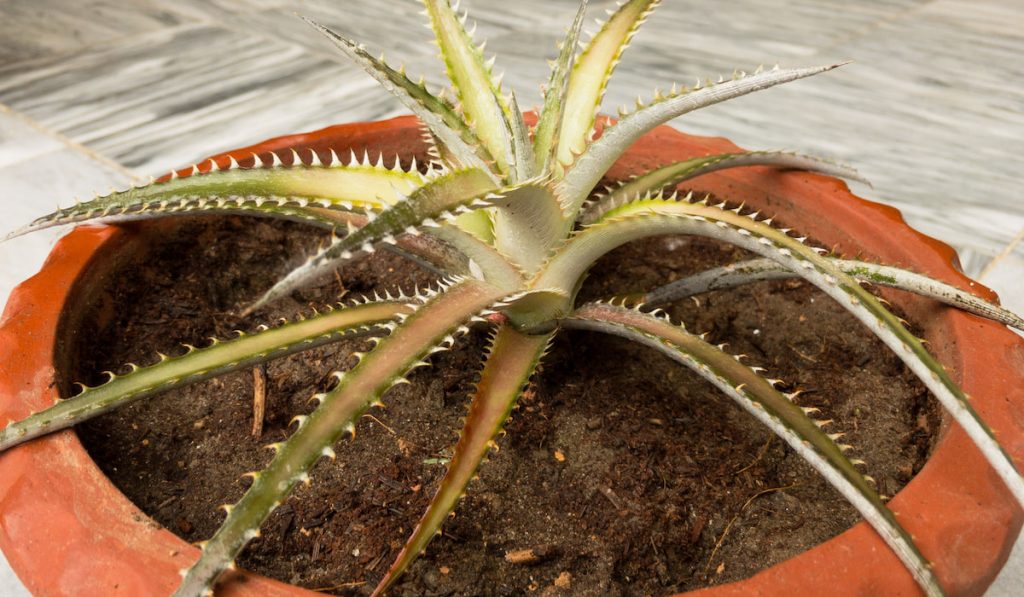
10. Dyckia – Green Leaves and Red Flowers
Dyckia is native to South America, with 120 species found in Brazil. Most Dyckia species are used as potted houseplants.
Dyckias usually come with fleshy, pointed, thick leaves arranged in rosettes. The leaves can be red, green, yellow, or grey.
Dyckia is not a true succulent but can survive without water for long periods. In the spring, it produces multiple yellow, orange, or red flowers on a thin stalk. The height of Dyckia plants varies among species, with the usual range being 8-24 inches.
Dyckia are one of the toughest bromeliads. Some species can survive temperatures of 20°F or lower. In certain climates, this toughness makes them suitable for outdoor landscape plants.
Dyckias thrive in areas with partial shade and adequate sunlight exposure. They are suited for USDA growing zones 9-11.
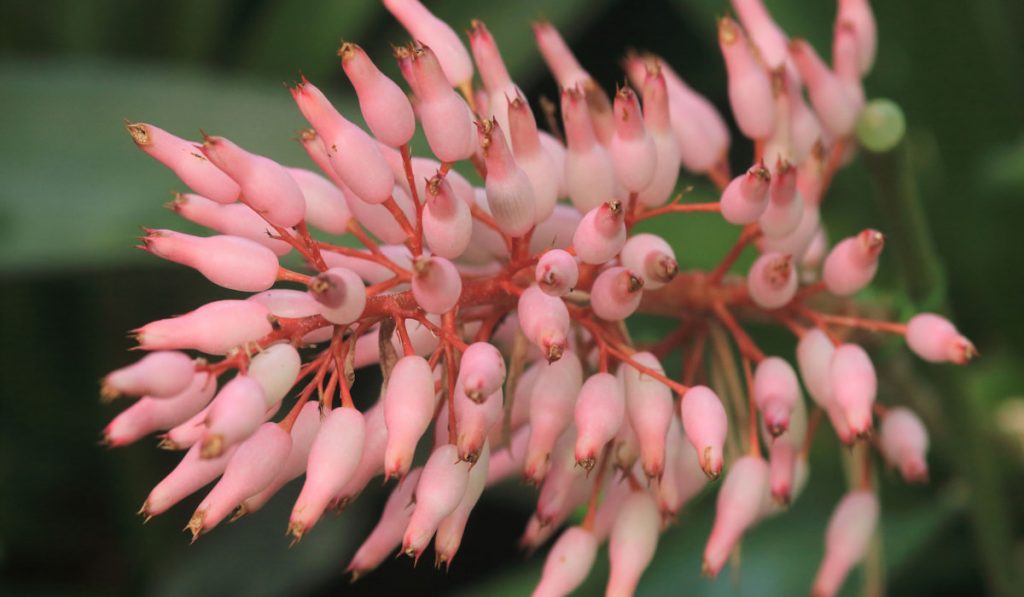
11. Portea – Yellow-Green Leaves and Pink or Lavender Flowers
Portea is one of the most decorative and attractive Bromeliad plants. It is native to the Brazilian coast of Rio de Janeiro and is robust and hardy.
When Portea blooms, it reaches heights of over 3 feet. The flowers it produces are a beautiful combination of coral pink, lavender, and blue-grey colors.
The leaves are yellow-green with spines on their edges, and they provide the perfect background for the colorful flowers the Portea plant produces.
Porteas are made even more beautiful when they produce their blue-colored berries.
The stalk of Portea flowers is rosy-red, and it can grow as high as 4 feet. When climates are favorable, Portea is a perfect addition to gardens. They are suited for USDA growing zones 9-10.

